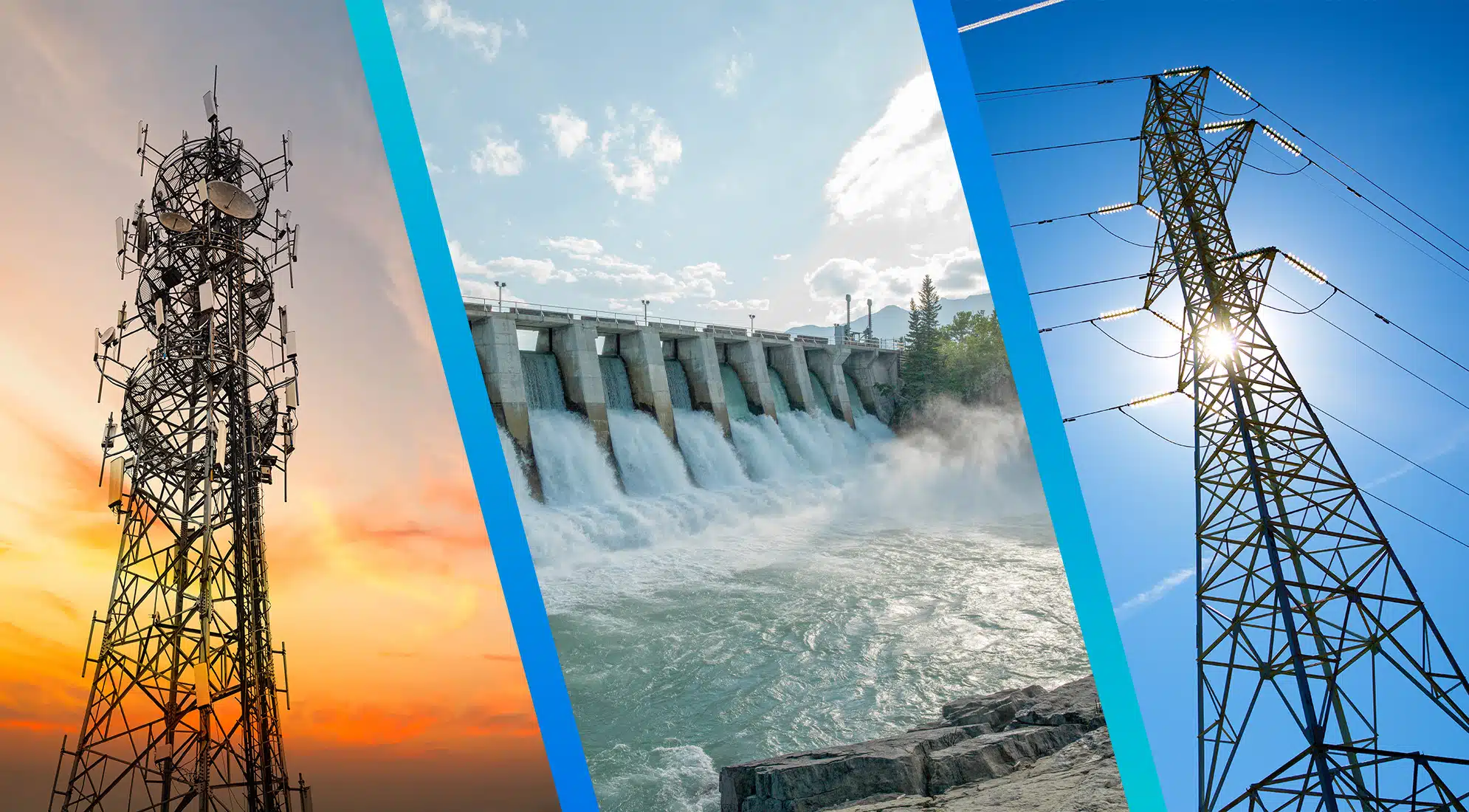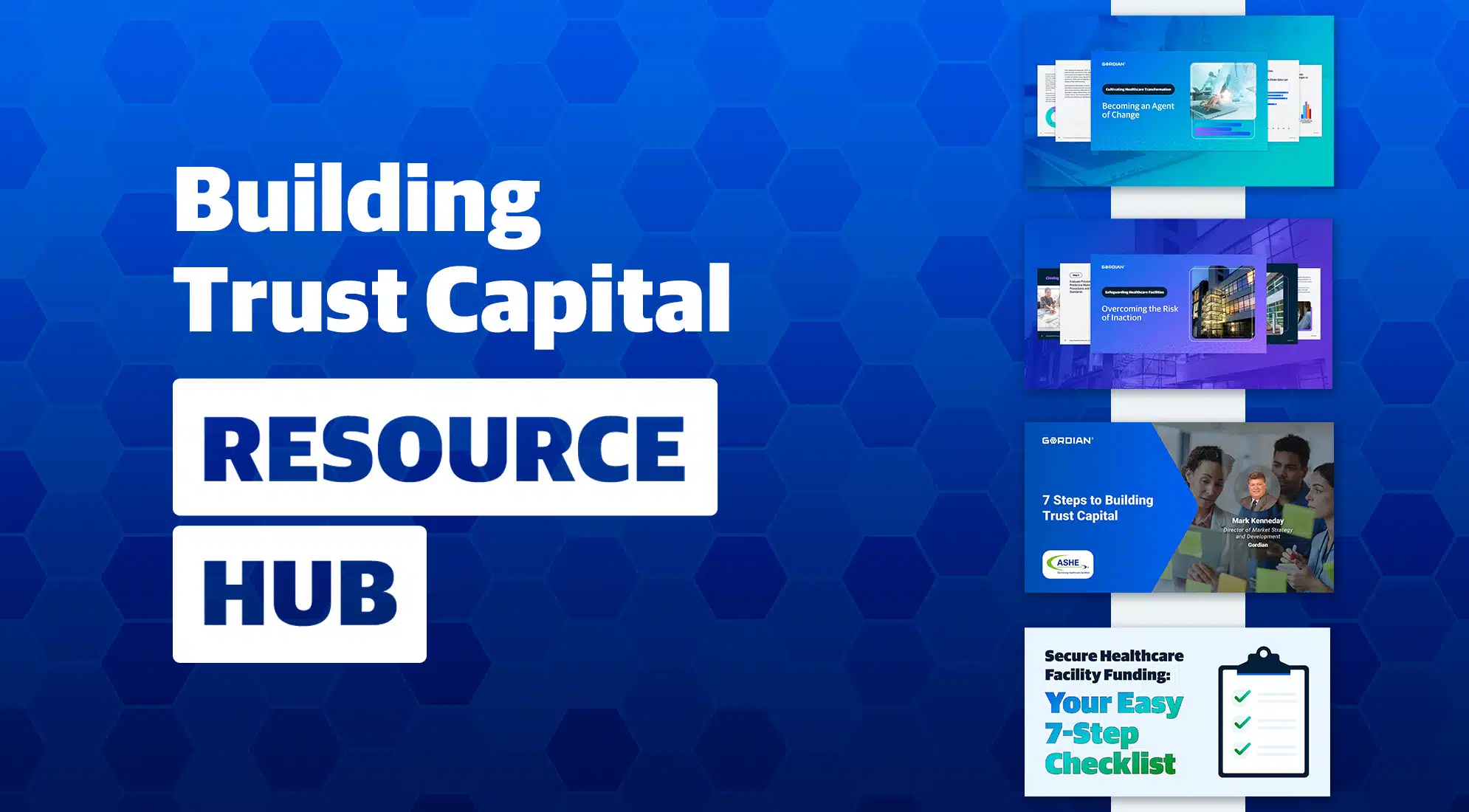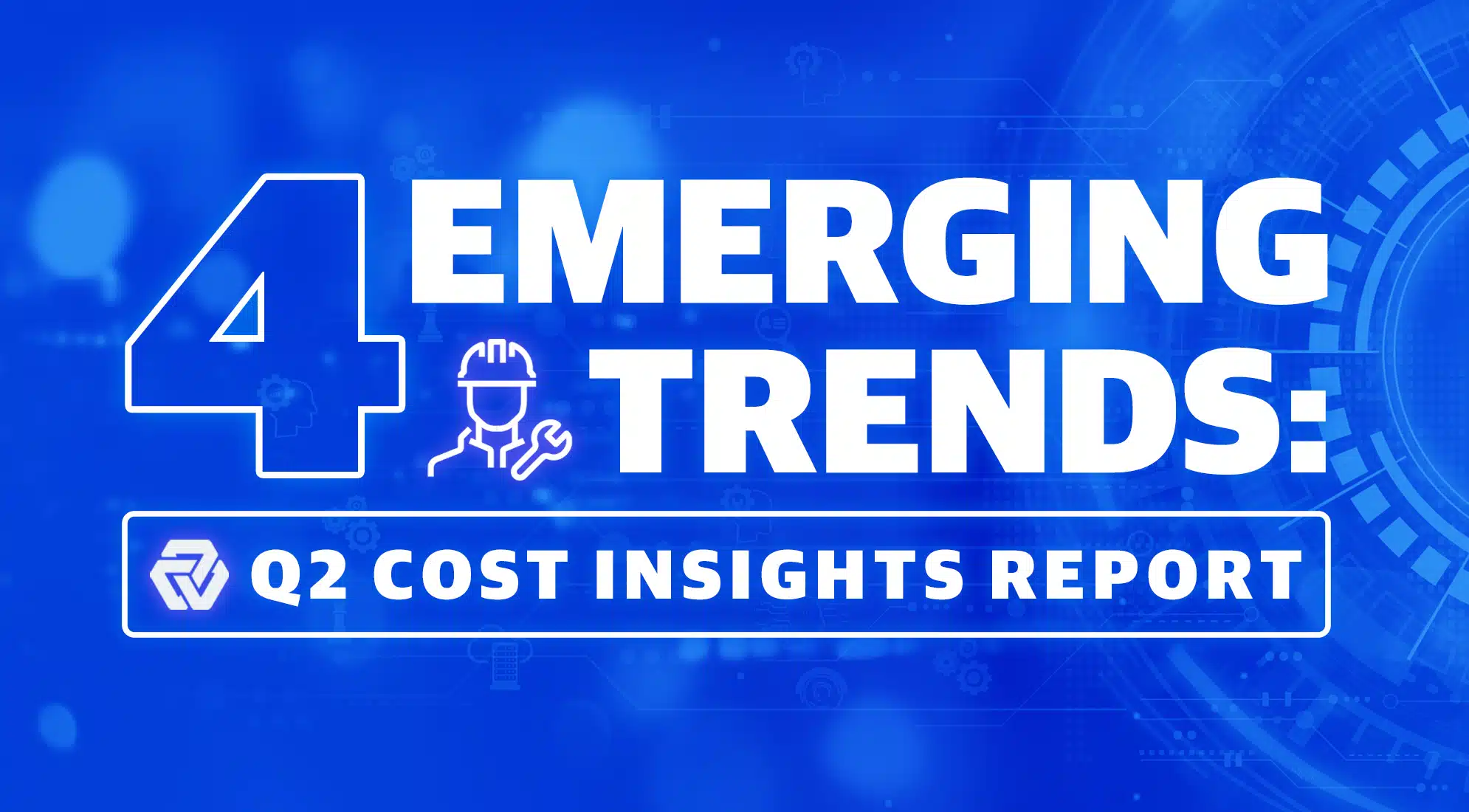
Utility Infrastructure Grades from the ASCE Report Card
August 8, 2024
Every four years, the American Society of Civil Engineers (ASCE) publishes the Report Card for America’s Infrastructure. This thorough report assigns letter grades to more than a dozen categories of U.S. infrastructure, from aviation to wastewater. Last year, Gordian released a high-level analysis of ASCE’s most recent grades. This year, we’ve taken a granular look at individual infrastructure categories to better understand the strengths, weaknesses and opportunities identified by the ASCE. Further, we’ve discussed what can be done to improve infrastructure assets and, by extension, improve communities. In this, our final post on the subject, we examine the ASCE’s most recent grades for utility infrastructure.
ASCE Report Card Grades for Energy, Dams and Broadband
Infrastructure Sector 1: Energy
2021 Grade: C-
It’s easy to become complacent about energy, to be lulled into thinking that electricity exists entirely of its own volition. That could not be further from the truth.
Electricity is a generated commodity. Its reliable production and distribution are critical for promoting community health, public safety and commerce. Keeping this all-important utility up and running requires significant funding and effort. The ASCE reports that annual spending on high voltage transmission lines jumped from $15.6 billion in 2012 to $21.9 billion in 2017 and that distribution funding increased by 54% along that same timeline. Yet weaknesses persist, particularly regarding the electric grid. Per the ASCE Report Card, the “predominant cause” of the 638 outages recorded between 2014 to 2018 was severe weather. Combatting this reality and minimizing weather-related outages will require more spending on facilities resilience, according to the ASCE. That would require closing the electric grid’s funding gap, which is expected to grow to $197 billion by 2029.
Infrastructure Sector 2: Dams
2021 Grade: D
The state of America’s 91,000 dams is complex and nuanced, beginning with ownership. Over half are privately-owned and, according to the ASCE, follow a “rigorous operations and maintenance schedule,” which is great news for public safety. 20% are owned by local government and state and federal government entities each own 5%. Only 2% of dams are owned by public utilities and a meager 3% are responsible for supplying communities with hydroelectric power. See? Complex and nuanced.
Regardless of ownership, every dam is classified by hazard potential, which is a characterization of the likely loss of human life and the degree of property damage should a dam fail. The number of high-hazard-potential dams has doubled over the last two decades, meaning the prospect of devastation is far greater than it was at the dawn of the new millennium. 81% of high-hazard-potential dams have developed emergency action plans. While that is phenomenal, the Association of State Dam Safety officials estimates that over 2,300 of these dams are presently deficient due to lack of investment.
Infrastructure Sector 3: Broadband
2021 Grade: N/A
The ASCE declined to issue broadband a grade in its latest report card due to “insufficient information.” Yet, their engineers offered plenty of analysis to consider. For example, The National Association of Counties (NACo) estimated in 2020 that 65% of U.S. counties’ average internet connection speeds are too slow to meet the FCC’s definition of broadband. 20% of American schoolchildren lack the necessary broadband to access learning materials. Sadly, disadvantaged communities and rural areas are on the losing end of the digital divide.
Government entities and the private sector, to their credit, are working to close the gap between the digital haves and have-nots. The Cellular Telecommunications Industry Association (CTIA) reports the telecom industry invested $27.4 billion to expand broadband capacity and increase coverage in 2019, and in 2020, the Federal Communications Commission (FCC) launched the Rural Digital Opportunity Fund, a 10-year, $20 billion program to finance the deployment of faster broadband networks in rural areas. These are excellent steps, but significant efforts lie ahead.
Recommendations for Improving Utility Infrastructure
Optimizing the operation of these assets will have tremendous benefits for communities everywhere. Here’s what the ASCE suggests to make utility infrastructure as powerful and efficient as possible.
Widespread standardization. Developing and enforcing standards for safety and resilience will go a long way toward making these services available to all.
Increased funding. Capital investment is necessary for enhancing the electric grid’s reliability, rehabilitating the nation’s dams and expanding broadband availability. This may be an area of opportunity for public-private partnerships.
Effective assessments. Mitigating risks and developing accurate long-term costs requires “increasing [the] frequency and effectiveness” of critical asset inspections, particularly when it comes to the electric grid. ASCE also recommends that government agencies regularly meet reporting deadlines to ensure policymakers and other leaders have adequate data for making funding decisions.
Gordian can help with a variety of condition assessments for collecting facility and infrastructure data and the Gordian Cloud Platform, a revolutionary experience that delivers critical capabilities and connectivity across the building lifecycle. Organizations can store, update and synthesize their facilities data in one secure platform, giving them the power to make informed investment decisions quickly.
Gordian can also help complete identified utility infrastructure projects with Job Order Contracting (JOC). A streamlined construction procurement solution, JOC empowers organizations to complete many projects using one competitively awarded contract, significantly reducing the time to construction. Prices and proposal versions are available and recorded in the Gordian Cloud Platform, so leaders can defend every spending decision.
Looking Ahead to the Next ASCE Report Card
The ASCE is slated to release its next Report Card for America’s Infrastructure in 2025. We’ll be fascinated to see how grades have changed — hopefully for the better. No matter how the scores shift, we’ll be back with more analysis.
Share this:





